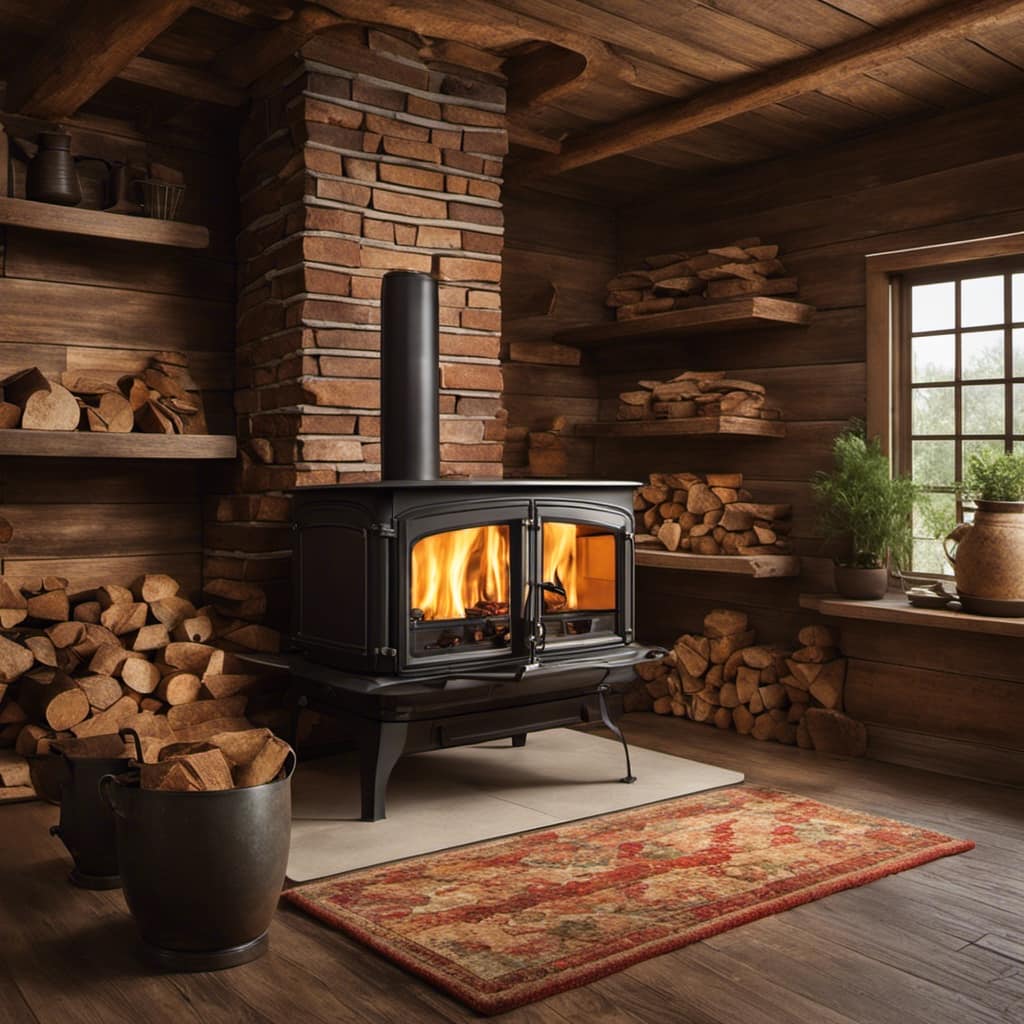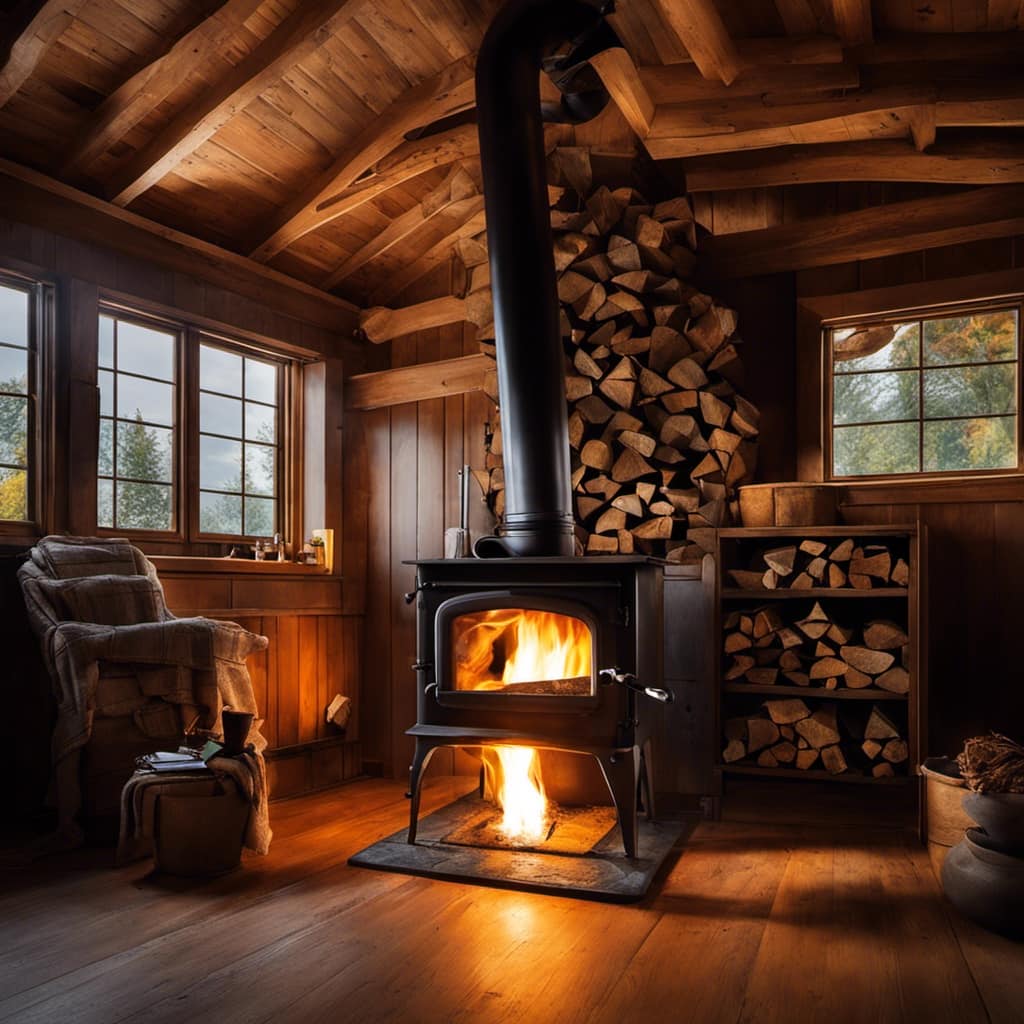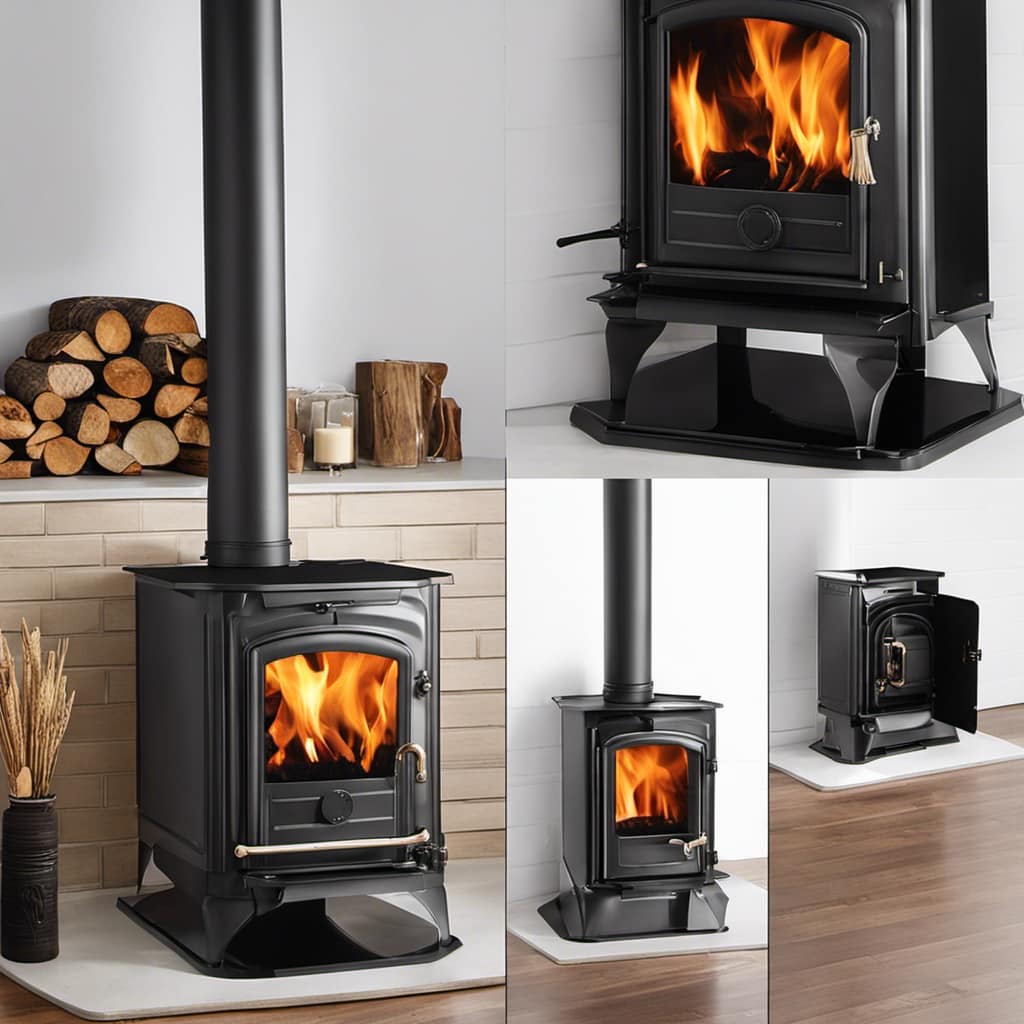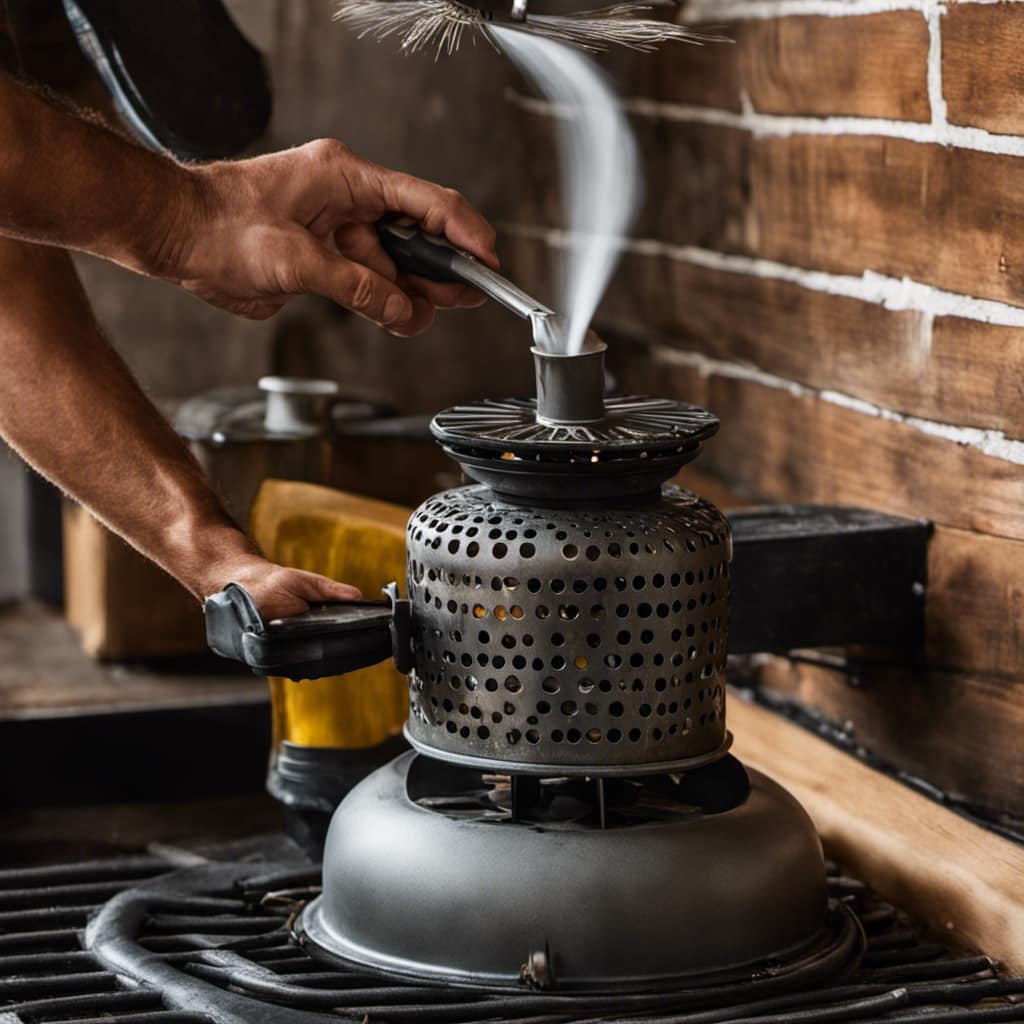
I will demonstrate how to adjust the air intake on your wood stove for optimal performance.
Adjusting the air intake is crucial to ensure efficient burning and maintain a steady, controlled fire.
In this guide, I’ll walk you through the steps, providing technical insights and tips to avoid common mistakes.
With a little know-how, you’ll be able to achieve the perfect balance of airflow, maximizing heat output and minimizing fuel consumption.

Let’s get started!
Key Takeaways
- Proper air intake ensures efficient burning and controlled fire.
- Adjusting air intake allows for better control and effective heat production.
- High air intake increases combustion efficiency and reduces smoke emissions.
- Find the right balance between too much and too little air for optimal burning conditions.
Understanding the Importance of Air Intake
I can’t stress enough the importance of having proper air intake for your wood stove. The impact of air intake on wood stove efficiency is significant, as it directly affects how efficiently your stove burns fuel. When the air intake is properly controlled, it allows for a more complete combustion of the wood, resulting in higher heat output and reduced emissions. This not only saves you money on fuel but also contributes to a cleaner and healthier environment.
By having proper air intake control, you can achieve optimal burning conditions and maximize the efficiency of your wood stove.
Now that we understand the benefits of proper air intake, let’s move on to assessing your wood stove’s current air intake setting.

Assessing Your Wood Stove’s Current Air Intake Setting
One should check if their wood stove’s current air intake setting is adjusted properly to ensure optimal burning conditions.
Evaluating the effectiveness of the air intake is crucial for troubleshooting problems that may arise during the burning process.
If the air intake is set too low, it can result in poor combustion, leading to excessive smoke and a lack of heat production.
On the other hand, if the air intake is set too high, it can cause the fire to burn too quickly, wasting fuel and potentially overheating the stove.

Adjusting the air intake allows for better control of the burning process, ensuring efficient and effective heat production.
In the following section, I’ll provide a step-by-step guide to adjusting the air intake on a wood stove.
Step-by-Step Guide to Adjusting the Air Intake
First, start by identifying the correct air intake lever and gently move it to the desired position. Adjusting the air intake on a wood stove is crucial for efficient and safe operation. The air intake lever controls the amount of oxygen entering the combustion chamber, affecting the burn rate and heat output.
To optimize the stove’s performance, follow these setting recommendations. For a high burn rate and maximum heat, open the air intake fully. This allows more oxygen to enter, resulting in a hotter fire. For a slower burn and longer heat retention, partially close the air intake. This restricts the oxygen flow and slows down the combustion process.

Troubleshooting techniques include checking the air intake lever for any obstructions or debris that may hinder its movement. Also, ensure that the gaskets and seals around the air intake are in good condition to prevent any air leakage.
Tips for Achieving an Optimal Air Intake Setting
To achieve an optimal air intake setting, it’s important to carefully adjust the lever and experiment with different positions.
A high air intake can offer several advantages, including increased combustion efficiency and reduced smoke emissions.
When the air intake is set too low, however, it can lead to a range of issues. Signs of a low air intake include poor combustion, excessive smoke, and a lack of heat output.

To avoid these problems, it’s crucial to find the right balance by adjusting the lever gradually and observing the stove’s performance.
This process may require some trial and error, as different wood stoves have varying air intake requirements.
Common Mistakes to Avoid When Adjusting Air Intake
I often make the mistake of adjusting the air intake too high, causing excessive smoke and poor combustion. This is a common mistake that many wood stove users make, but it can easily be avoided with the right troubleshooting tips. When adjusting the air intake, it is important to find the right balance between too much and too little air. To help you understand this better, here is a table outlining the recommended air intake settings based on different situations:
| Situation | Air Intake Setting |
|---|---|
| Starting a fire | High |
| Maintaining a steady burn | Medium |
| Maximizing heat output | Low |
| Reducing smoke | Medium-Low |
Frequently Asked Questions
How Often Should I Adjust the Air Intake on My Wood Stove?
I adjust the air intake on my wood stove as needed, depending on the burn rate and temperature. It’s important to maintain proper airflow for efficient combustion and to prevent the buildup of creosote.

Can I Use Any Type of Wood in My Wood Stove, or Does the Type of Wood Affect the Air Intake Setting?
Using the right type of wood in your wood stove can affect the air intake setting. Dense hardwoods like oak burn slower, requiring less air, while softwoods like pine burn faster, needing more air. Adjust accordingly for optimal efficiency.
Is It Necessary to Adjust the Air Intake During Different Seasons or Weather Conditions?
Seasonal air intake adjustments are necessary to optimize wood stove performance. Weather conditions impact air intake, requiring adjustments for proper combustion. Understanding how to adjust air intake ensures efficient heating and prevents potential issues.
What Are the Signs That Indicate the Air Intake on My Wood Stove Needs to Be Adjusted?
The signs of air intake adjustment needed on a wood stove include weak or inconsistent flames, excessive smoke, and difficulty in controlling the fire. Proper air intake levels are important for efficient combustion and optimal heat output.
Are There Any Safety Precautions I Should Take When Adjusting the Air Intake on My Wood Stove?
When adjusting the air intake on a wood stove, it is crucial to prioritize safety. Taking precautions such as wearing gloves and ensuring proper ventilation can prevent accidents and ensure the efficient operation of the stove.

Conclusion
In conclusion, mastering the art of adjusting the air intake on your wood stove is crucial for achieving optimal performance and efficiency.
By understanding the importance of air intake, assessing your current settings, and following our step-by-step guide, you can ensure a well-regulated combustion process and a cozy, warm environment.
Don’t fall into the trap of common mistakes – take control of your wood stove’s air intake and experience the ultimate comfort and satisfaction it can provide.
Growing up surrounded by the vast beauty of nature, Sierra was always drawn to the call of the wild. While others sought the comfort of the familiar, she ventured out, embracing the unpredictable and finding stories in the heartbeat of nature.
At the epicenter of every remarkable venture lies a dynamic team—a fusion of diverse talents, visions, and passions. The essence of Best Small Wood Stoves is crafted and refined by such a trio: Sierra, Logan, and Terra. Their collective expertise has transformed the platform into a leading authority on small wood stoves, radiating warmth and knowledge in equal measure.










